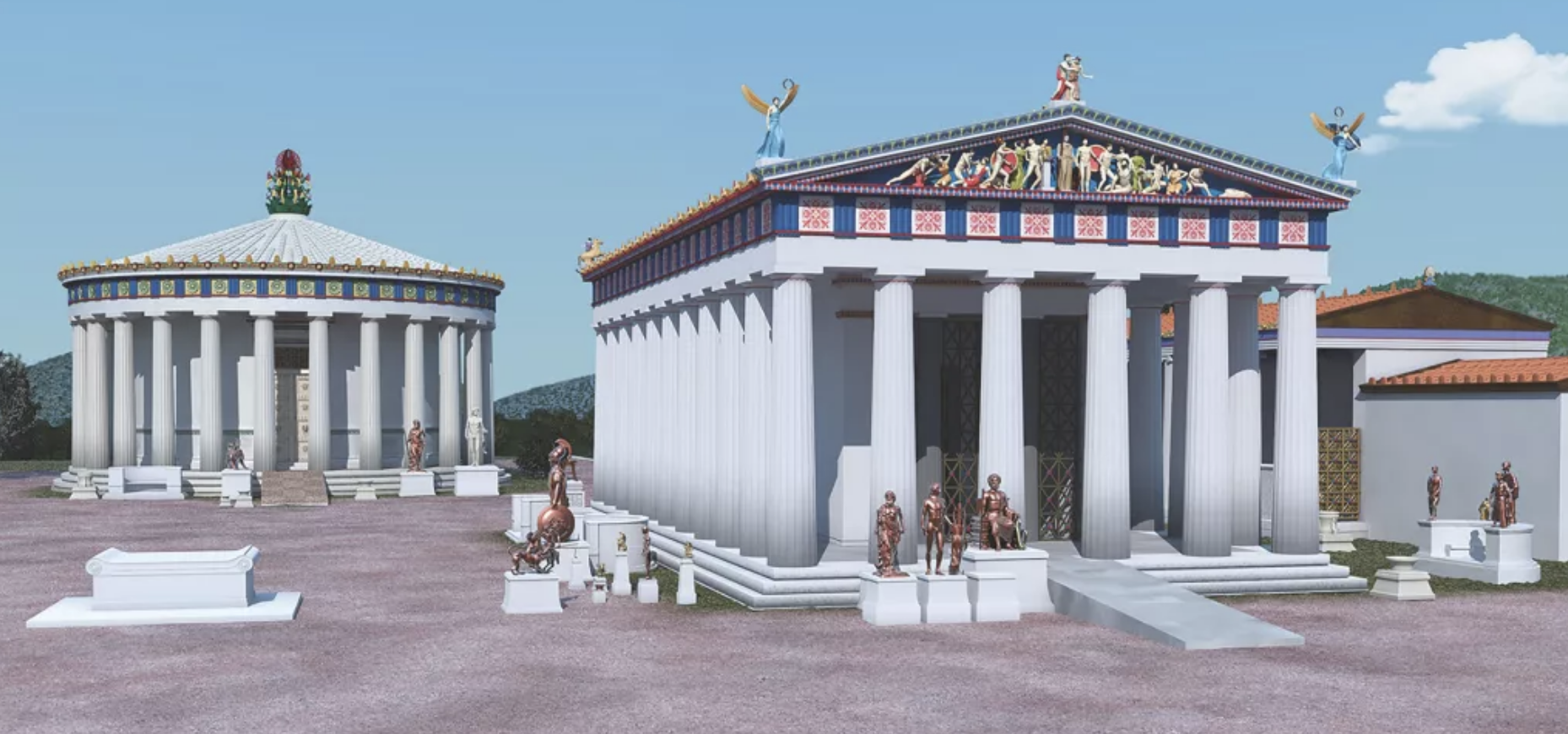Products You May Like
In ancient Greece, several hundred years before the common era and long before the invention of wheelchairs, some holy sanctuaries may have been specially designed with disability in mind.
While ramps were not particularly common in the fourth century BCE, ancient healing temples are often ringed by these permanent stone structures. Archaeologist Debby Sneed from California State University suspects that’s no coincidence.
In a new paper, she argues the ancient Greeks planned and constructed these ramps to accommodate those who could not easily use stairs, including the elderly, pregnant women, small children, those with canes and crutches, those being transported on litters, and individuals with impaired mobility.
“While the provision of access to mobility-impaired individuals may not have been the exclusive function of these ramps,” Sneed argues, “it was a primary factor in their construction.”
Analysing the literature and personally visiting several well-known sites, Sneed has revealed a curious pattern in the use of small fixed ramps in the entryways of ancient Greek temples.
 (© 2019 J. Goodinson; scientific advisor J. Svolos; via Sneed, Antiquity, 2020)
(© 2019 J. Goodinson; scientific advisor J. Svolos; via Sneed, Antiquity, 2020)
Above: Reconstruction of the fourth-century BC Temple of Asklepios at Epidauros (right), showing the ramp extending out of the front/east side.
The sanctuaries dedicated to healing tend to have more ramps surrounding them. In the past, archaeologists have assumed this was for animal sacrifices, but Sneed points out that most of these messy affairs happened on altars outside the temples.
It’s also unlikely that these stone ramps were remnants of construction, as the ancient Greeks tended to rely on cranes and hoists while building.
Sneed’s research points out a preponderance of ramps at some sanctuaries and not others. While the sanctuary that housed the original Olympic games at Olympia has two ramps, one to the main temple and another to a sacrificial precinct, the healing Sanctuary of Asklepios at Epidauros - arguably the most important healing sanctuary of ancient Greece – has 11 stone ramps on nine separate buildings. Other subsidiary buildings around it were not raised above ground level.
“The available evidence indicates a trend whereby healing sanctuaries, which hosted many individuals with a range of illnesses, injuries and conditions (including many affecting mobility), had more ramps than non-healing sanctuaries,” writes Sneed.
“Two such healing sanctuaries, the Asklepios sanctuaries at Epidauros and Corinth, are sufficiently well preserved to illustrate this pattern.”
The one at Corinth only has two ramps, admittedly, but it’s built in a way that makes all of its rooms easily accessible. The ramp at the entrance delivers you into the highest room, another delivers you into the court, and the last room is at ground level.
There are some exceptions. The healing sanctuary on Kos has stairs connecting all its terraces, but as Sneed points out, it may have also specialised in a form of healing that didn’t often require ramps.
In Corinth, for example, excavators at the sanctuary found caches of even older anatomical offerings, including a large number of legs and feet from both men and women.
“The apparent dedicatory emphasis on legs and feet – and hence on lower-body injuries and impairments – at this early date may have encouraged the builders to include ramps when the spaces were reconstructed in the later fourth century BC to accommodate the relatively large number of visitors with impaired mobility that the site catered to or historically attracted,” writes Sneed.
Sneed’s unique project of researching disability in ancient Greece has been deemed compelling by other archaeologists, although not everyone is convinced.
Katja Sporn, head of the German Archaeological Institute in Athens, told Science news that because these ramps were found in one particular region, they might simply have been a trend in architecture.
“It helps everyone, also disabled people, walk into temples better,” Sporn says. “But that you would only do it for disabled people I don’t find convincing.”
Either way, the thesis raises an interesting discussion point, as Sneed concludes in her paper; one that’s relevant for the inclusion of disabled community members today.
“Ancient Greek society neither mirrors our own, nor is it a precursor of a modern ‘Western civilisation’. Even where we do see similarities, as in the construction of ramps to promote accessibility, we cannot attribute them to the same causes,” she writes.
“We can, however, discuss the motivations behind the decisions of ancient Greek architects and builders, and of ancient Greeks in general, and consider the effects for individuals living within that society.”
The study was published in Antiquity.
